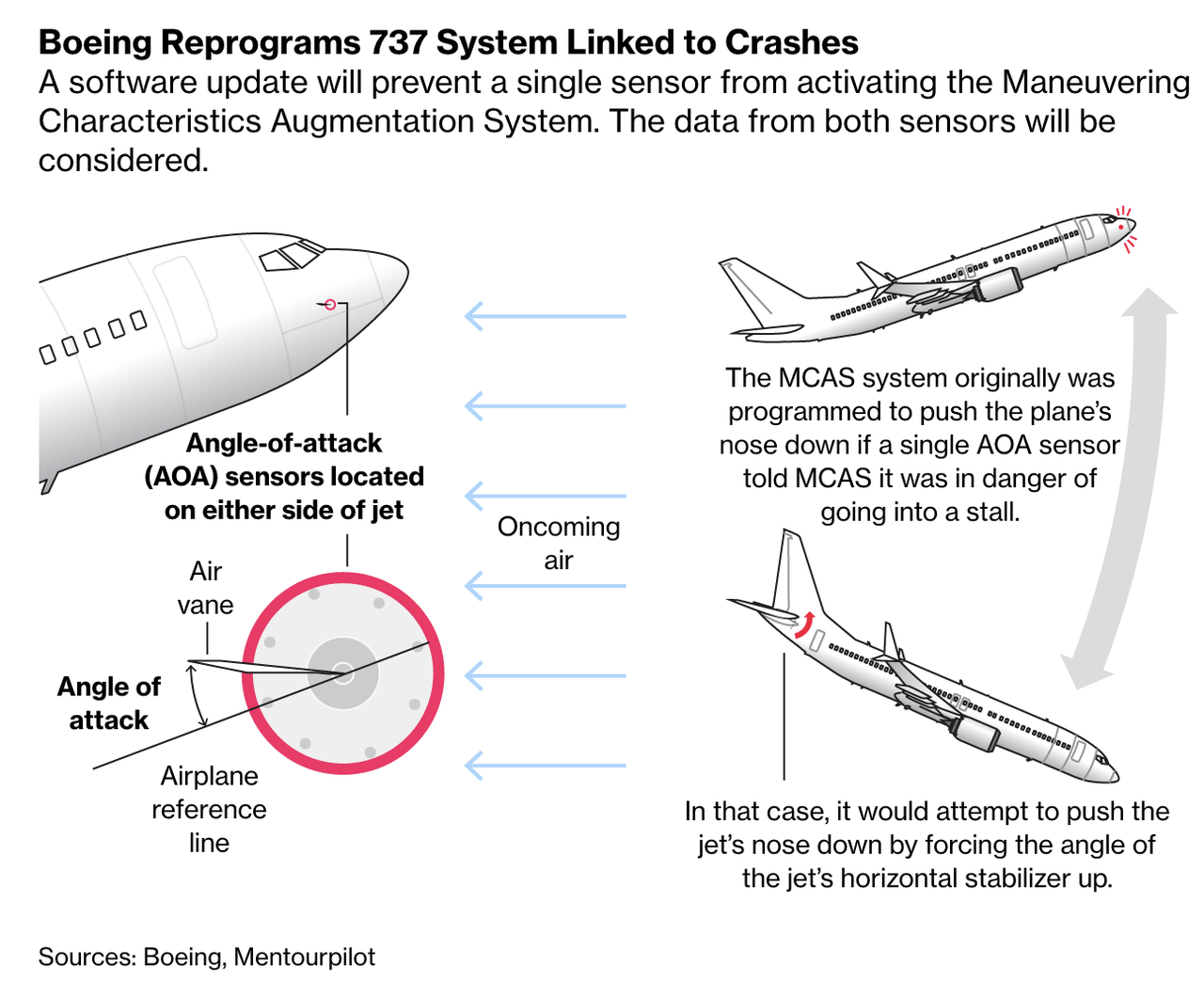So far, Boeing executives have done a remarkable job of deflecting questions about the role Boeing’s MCAS anti-stall software played in the two plane crashes that inspired airlines around the world to ground the workhorse jets. But that’s about to get a lot harder.
Confirming widely held suspicions, investigators have reportedly determined that MCAS was active at the time Ethiopian Airlines flight ET302 plunged to Earth in March 10, just minutes after taking off from an airport in Addis Ababa, according to WSJ. The report confirms what the CEO of Ethiopian Airlines told the press earlier in the week, when he said that the airline believed the software had been active at the time, though he couldn’t confirm it.
Investigators have reached a “preliminary conclusion” that the software automatically activated, according to what they told FAA officials during a high-level briefing with the FAA on Thursday. WSJ said it is the “strongest indication yet” that the software was involved in both the Lion Air and Ethiopian Airlines crashes, which killed more than 350 people.
US air safety experts have been analyzing information from the “black boxes” recovered from ET302 for the past few days. Meanwhile, a full preliminary report from the Ethiopian authorities is expected in the next few days.
Earlier this week, Boeing announced changes to MCAS, including allowing input from two sensors instead of one. Investigators suspect faulty data from the sensor helped trigger the system. Boeing is also adding certain cockpit alerts.
Here’s an illustration of how MCAS works (courtesy of Bloomberg):
via ZeroHedge News https://ift.tt/2HZQw5G Tyler Durden

